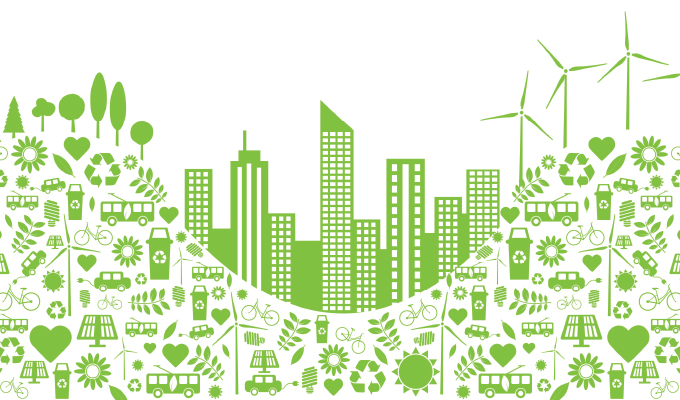The foundation for a future of regenerative LEED
During its annual Greenbuild International Conference and Expo held in Atlanta, Georgia, the U.S. Green Building Council (USGBC) announced LEED Positive—a vision statement and LEED development roadmap that will lay the foundation for a future of LEED that is regenerative.
“We must do all we can to leverage our tools and resources to scale up reductions in carbon emissions associated with buildings, communities, and cities,” says Mahesh Ramanujam, president and CEO, USGBC. “LEED must evolve qualitatively and quantitatively. Qualitatively, it must transition from strategies that reduce the harm done by buildings to strategies that cause no harm and are regenerative by design, ensuring our buildings are actually giving back more than they take. And quantitatively, it will need to accelerate and increase its impact ten to a hundred-fold by leveraging our Arc performance platform. The future of LEED is LEED positive.”
GLOBAL BUILDING
In the 20 years since its launch, LEED has transformed global building practices and communities all over the world. With more than 100,000 projects now engaged, the rating system has catalyzed changes in the building industry related to energy, water, waste, indoor environmental quality, and more. From mainstreaming cool roofs, low-VOC paints, building efficiency and commissioning, to providing the proof of concept enabling dramatic increases in the stringency of energy codes, LEED has defined green building standards.
The world faces staggering challenges through 2050 in terms of water scarcity, air quality, resiliency, and climate change. To help address these issues, the LEED Positive vision will guide USGBC in transitioning LEED from strategies that reduce the harm done by buildings to strategies that cause no harm and begin the process of healing and repair.
LEED Positive will encourage development that allows buildings to become a vehicle for environmental restoration and repair. The vision is composed of several parts that will work together to guide the development of the LEED rating system, including:
- Proposed LEED Positive targets for energy and carbon reduction that will require new construction to go further and push existing buildings with high energy usage to substantially increase their efficiency efforts.
- Define LEED Positive targets for other LEED credit categories that make up the holistic LEED rating system.
- Continue investment in LEED v4.1 to accelerate the implementation and adoption of LEED for both new and existing buildings.
- Support category level performance certificates through the Arc platform to provide existing buildings with a pathway to LEED certification.
“Thanks to LEED v4.1, we are seeing increased interest from existing buildings in LEED certification. This is crucial because existing buildings represent our largest market segment, providing category level performance certificates is an important catalyst in further accelerating the transformation of our existing buildings,” says Melissa Baker, senior vice president of LEED Technical Core at USGBC.
By reporting performance data and obtaining a performance score, a project will now be able to earn a category performance certificate in each of the five performance categories tracked in Arc—energy, water, waste, transportation, and human experience—and once a project achieves higher performance scores across all categories, they will be able to pursue LEED certification.
LIVING STANDARD CAMPAIGN
Last year at Greenbuild, USGBC announced the Living Standard campaign, which will play a critical role in communicating the vision of LEED Positive and the impact LEED is having across communities. USGBC research has found that even after 20 years of LEED, most people associate green buildings with energy efficiency, resource conservation, and cost savings, and do not make the connection that buildings also impact their health and wellness.
CLOSING THOUGHT
Through the power of storytelling fueled by the Living Standard campaign, USGBC will help everyone understand the value a LEED-certified building has by making visible the tangible, positive outcomes that green buildings can have on quality of life—both at the individual and community level.
For more information:
The U.S. Green Building Council is committed to a prosperous and sustainable future through cost-efficient and energy-saving green buildings. USGBC works toward its mission of market transformation through its LEED green building program, robust educational offerings, an international network of local community leaders, the annual Greenbuild International Conference & Expo, the Center for Green Schools, and advocacy in support of public policy that encourages and enables green buildings and communities. For more, visit usgbc.org.
Modern Contractor Solutions, January 2020
Did you enjoy this article?
Subscribe to the FREE Digital Edition of Modern Contractor Solutions magazine.



